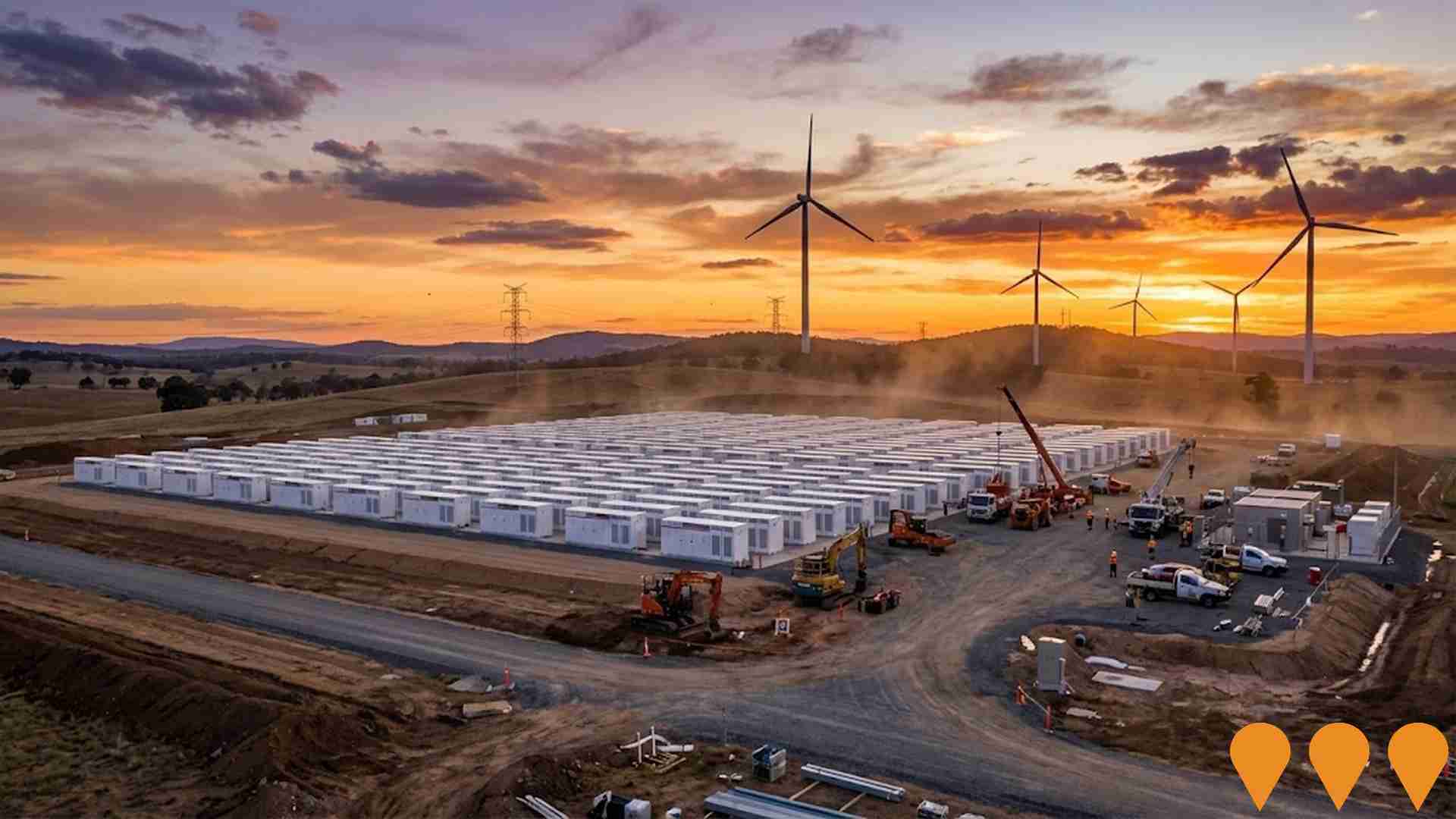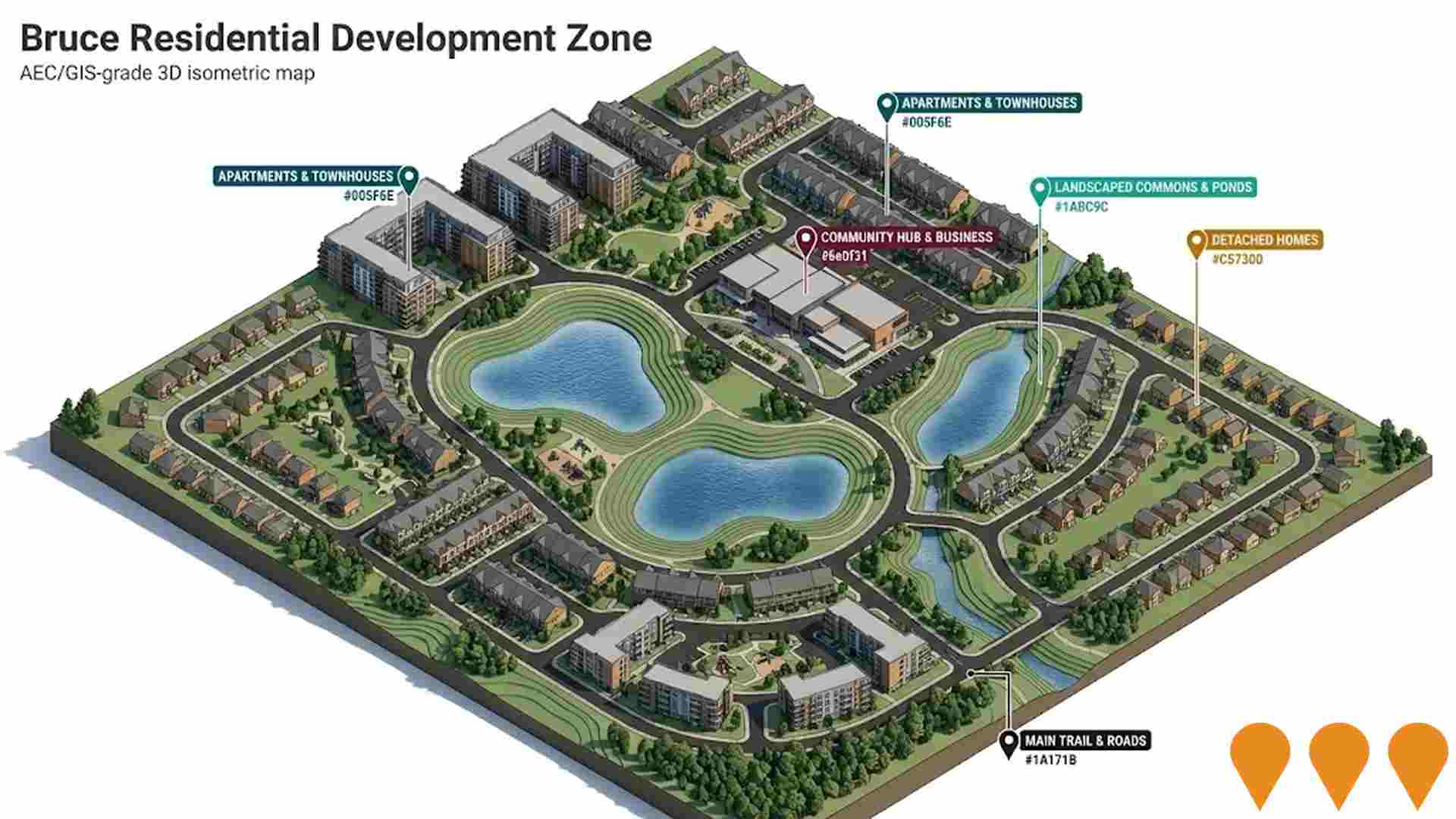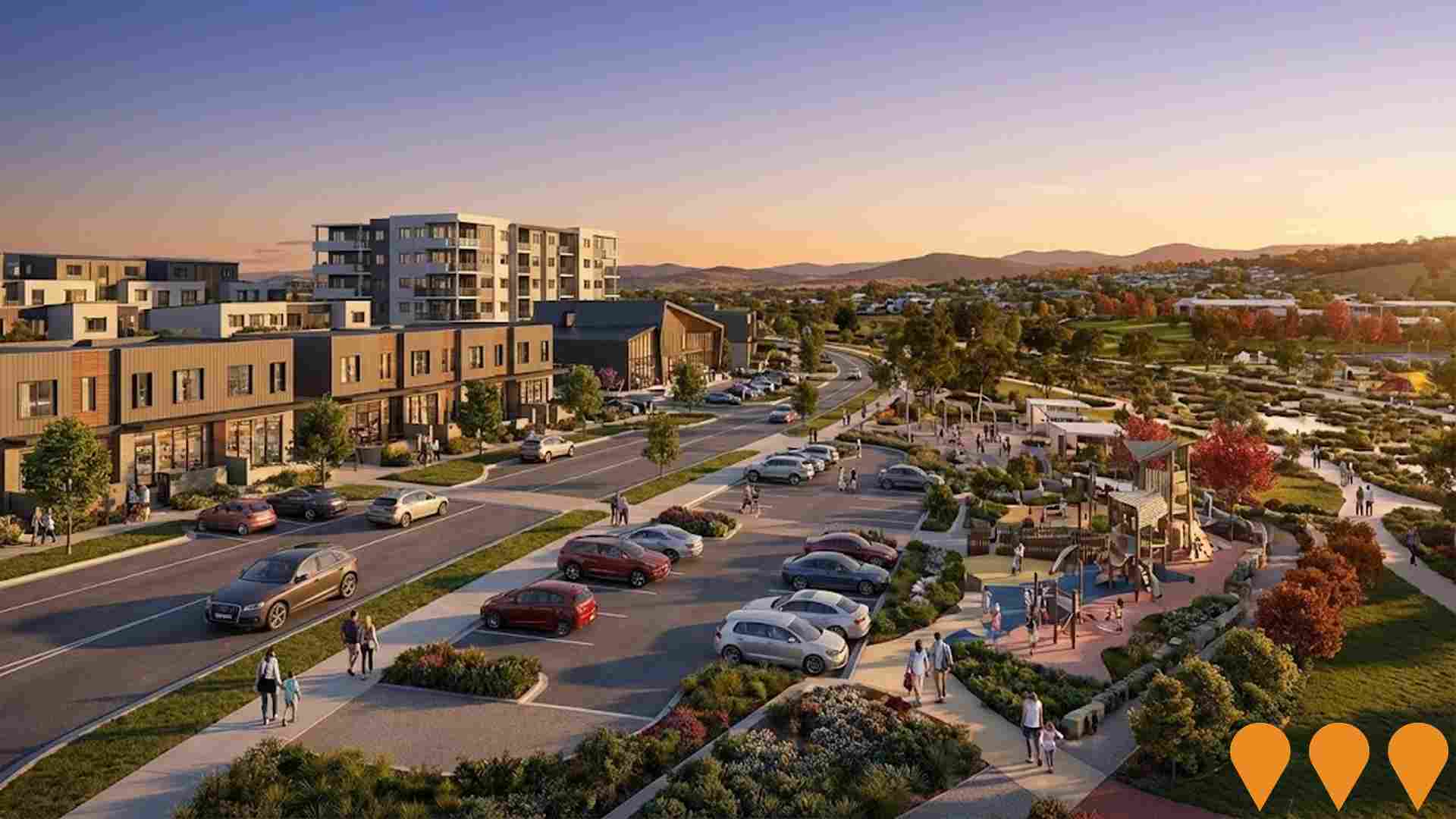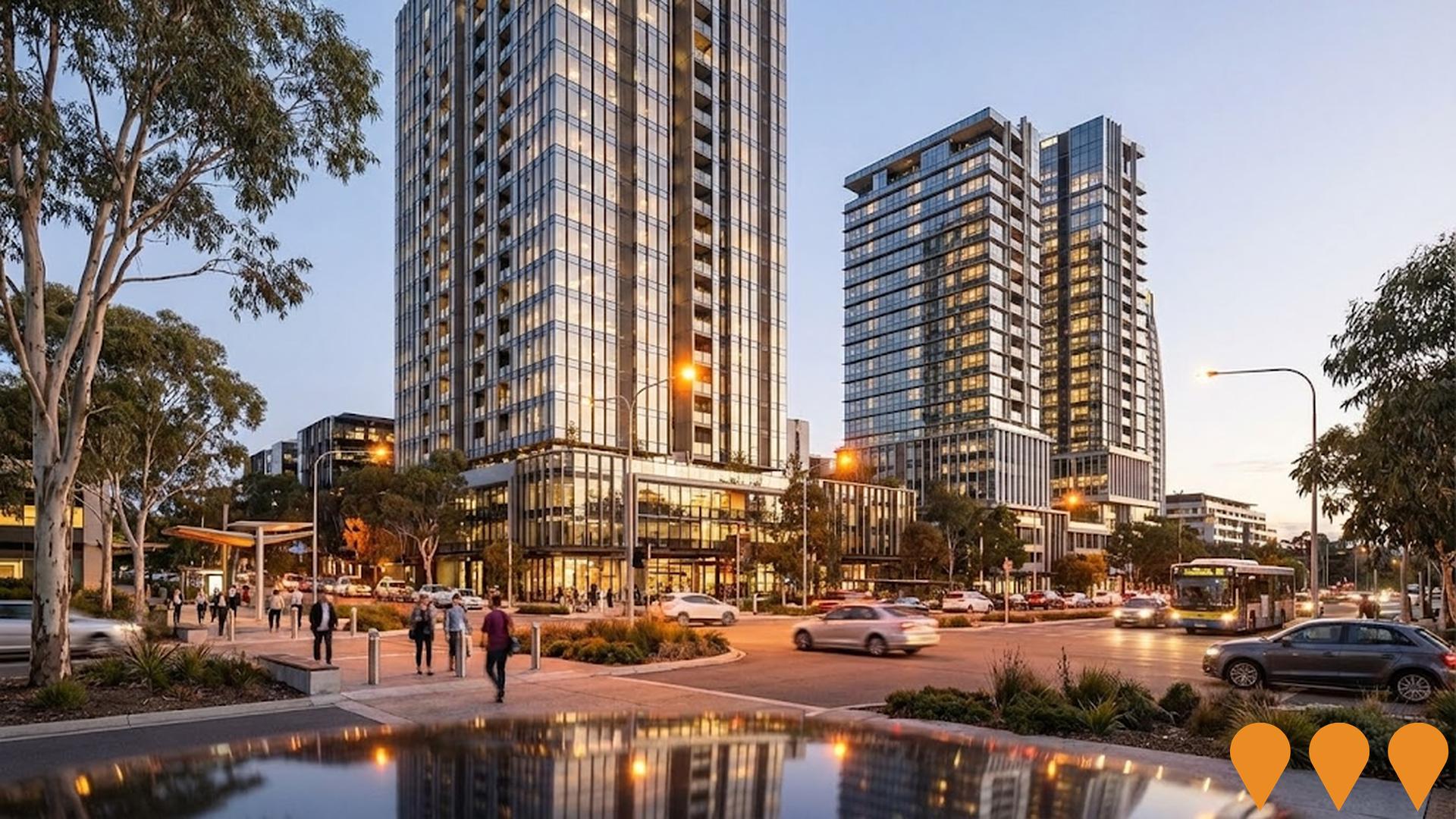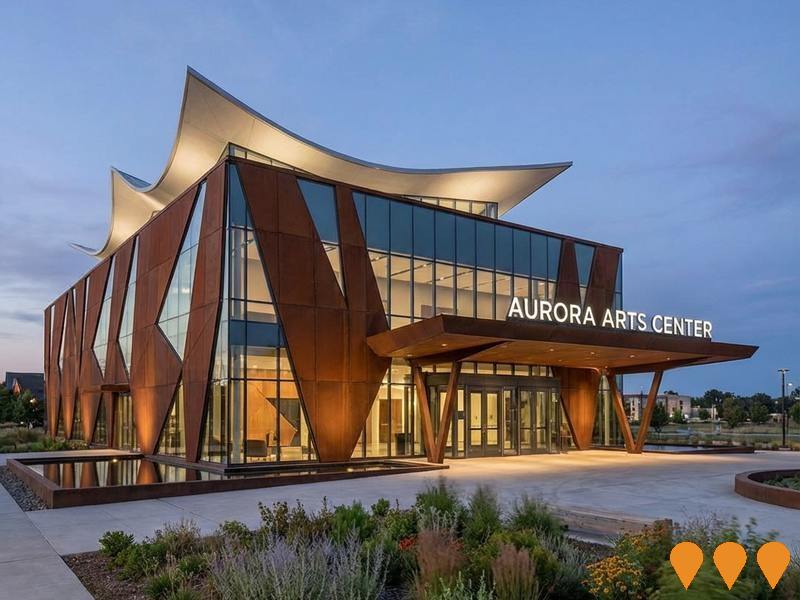Chart Color Schemes
est. as @ -- *
ABS ERP | -- people | --
2021 Census | -- people
Sales Activity
Curious about local property values? Filter the chart to assess the volume and appreciation (including resales) trends and regional comparisons, or scroll to the map below view this information at an individual property level.
Find a Recent Sale
Sales Detail
Population
Cook is positioned among the lower quartile of areas assessed nationally for population growth based on AreaSearch's assessment of recent, and medium term trends
Cook's population, as of Aug 2025, is approximately 2902, a decrease of 63 people from the 2021 Census figure of 2965. This decline, representing a 2.1% change, is inferred from ABS data showing an estimated resident population of 2896 in June 2024 and the validation of seven new addresses since the Census date. This results in a population density ratio of 1836 persons per square kilometer, higher than the national average according to AreaSearch assessments. Overseas migration contributed approximately 69.2% of overall population gains during recent periods in Cook. AreaSearch uses ABS/Geoscience Australia projections for each SA2 area, released in 2024 with a base year of 2022.
For areas not covered by this data and years post-2032, age group growth rates from the ACT Government's SA2 area projections are adopted. Population projections indicate a decline of 205 persons by 2041, according to AreaSearch methodology. However, specific age cohorts are anticipated to grow during this period, notably the 85 and over age group, which is projected to increase by 58 people.
Frequently Asked Questions - Population
Development
The level of residential development activity in Cook is very low in comparison to the average area assessed nationally by AreaSearch
Cook averaged approximately three new dwelling approvals annually. Between financial years 2021 and 2025, 18 homes were approved, with one additional approval in the current financial year 2026.
The population decline in recent years suggests that new supply has likely kept pace with demand, providing buyers with good choice. New properties are constructed at an average value of $428,000, which is moderately above regional levels, indicating a focus on quality construction. Compared to the Australian Capital Territory, Cook shows significantly reduced construction activity, being 79.0% below the regional average per person. This limited new supply generally supports stronger demand and values for established homes, which are also under the national average, suggesting the area's established nature and potential planning limitations. New development consists of an equal split between standalone homes and medium to high-density housing, creating more affordable entry points and suiting downsizers, investors, and first-home buyers. With approximately 1015 people per approval, Cook is a mature, established area.
Population projections indicating stability or decline suggest reduced housing demand pressures in the future, benefiting potential buyers.
Frequently Asked Questions - Development
Infrastructure
Cook has emerging levels of nearby infrastructure activity, ranking in the 25thth percentile nationally
No changes can affect an area's performance more than alterations to local infrastructure, significant projects, and planning initiatives. In total, zero projects have been identified by AreaSearch that could potentially impact the area. Key projects include Bruce Precinct (Section 15), Bruce Residential Development Zone, Belconnen Town Centre East Precinct (Republic Phase 2 & Future), and Belconnen Mixed-Use Towers. The following list details those likely to be most relevant.
Professional plan users can use the search below to filter and access additional projects.
INFRASTRUCTURE SEARCH
 Denotes AI-based impression for illustrative purposes only, not to be taken as definitive under any circumstances. Please follow links and conduct other investigations from the project's source for actual imagery. Developers and project owners wishing us to use original imagery please Contact Us and we will do so.
Denotes AI-based impression for illustrative purposes only, not to be taken as definitive under any circumstances. Please follow links and conduct other investigations from the project's source for actual imagery. Developers and project owners wishing us to use original imagery please Contact Us and we will do so.
Frequently Asked Questions - Infrastructure
Canberra Light Rail Stage 3: Belconnen to City (Bruce Alignment)
Planning and feasibility analysis for the future Stage 3 of the Canberra Light Rail network, connecting Belconnen Town Centre to the City via Bruce. The proposed corridor serves major precincts including the University of Canberra, CIT Bruce, North Canberra Hospital, and GIO Stadium. The project follows the Belconnen Transitway alignment and aims to provide high-capacity public transport to the north-west.

New Northside Hospital (North Canberra Hospital Redevelopment)
Development of a new major tertiary hospital on the existing North Canberra Hospital campus (formerly Calvary Public Hospital). The project involves an investment of over $1 billion to construct a new state-of-the-art clinical services building, expanded emergency department, and modern inpatient facilities to replace aging infrastructure.
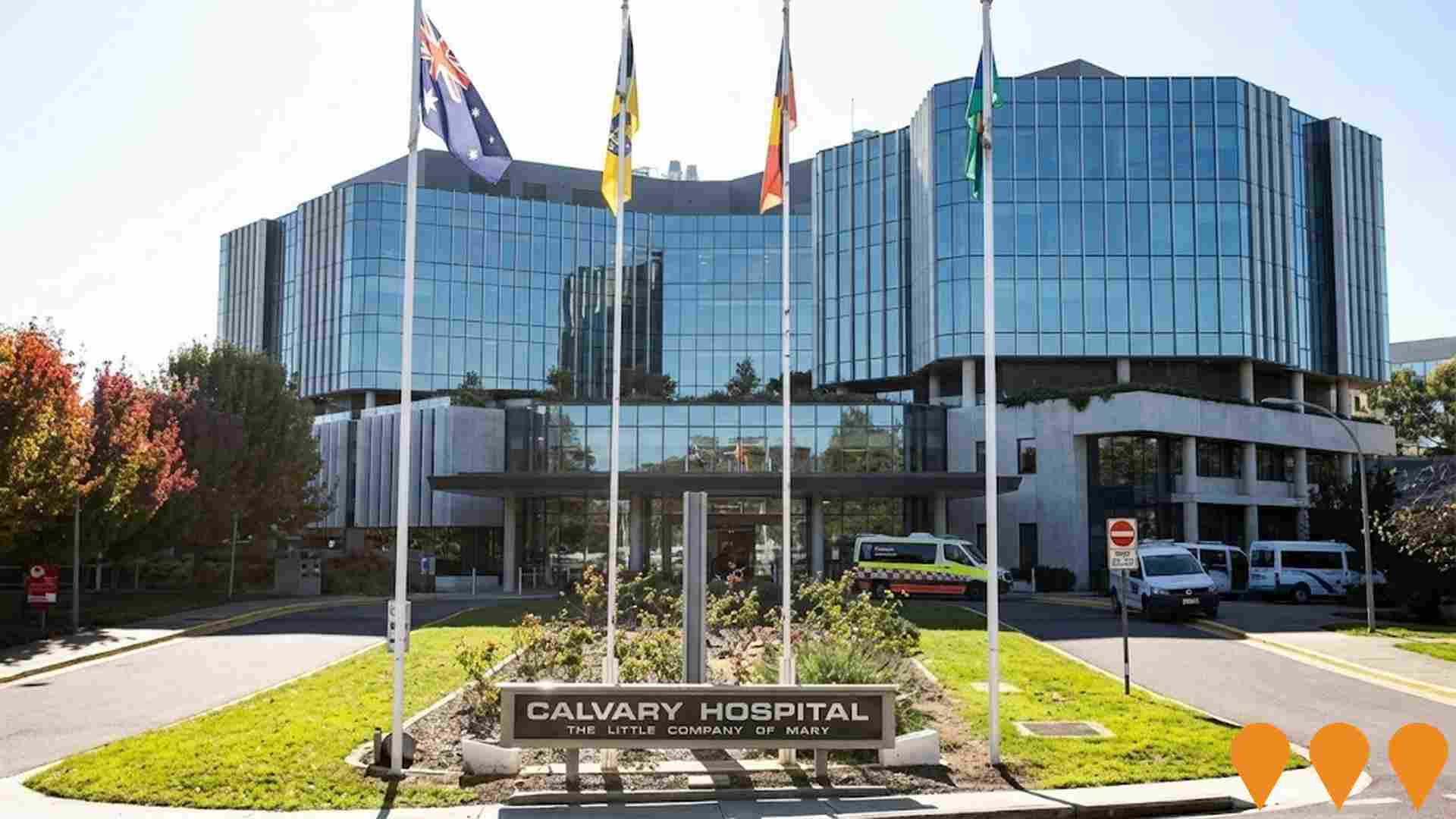
Belconnen Lakeshore - Connected Waterfront Precinct
Belconnen Lakeshore is an ACT Government land release and urban renewal project on the Lake Ginninderra foreshore at Emu Inlet. Guided by the Belconnen Town Centre Place Design Brief, the project will transform four waterfront sites including the Circus Sites Precinct and the former Water Police site into a mixed use precinct with new public waterfront promenades, upgraded open space and taller mixed use buildings stepping up from the lake edge. The Suburban Land Agency has run a two stage tender process for the land release and evaluated tenders, but as at mid 2025 the lakeshore blocks have not yet been sold, with final sale and detailed development design still to be confirmed.

Bruce Precinct (Section 15)
A masterplanned mixed-use urban precinct and residential land release located centrally in Bruce, adjacent to the AIS and Bruce Ridge Nature Reserve. The project aligns with the Bruce Sports, Health and Education Precinct masterplan, delivering approximately 250-500 new dwellings, including affordable housing options, alongside commercial, hospitality, and retail opportunities.
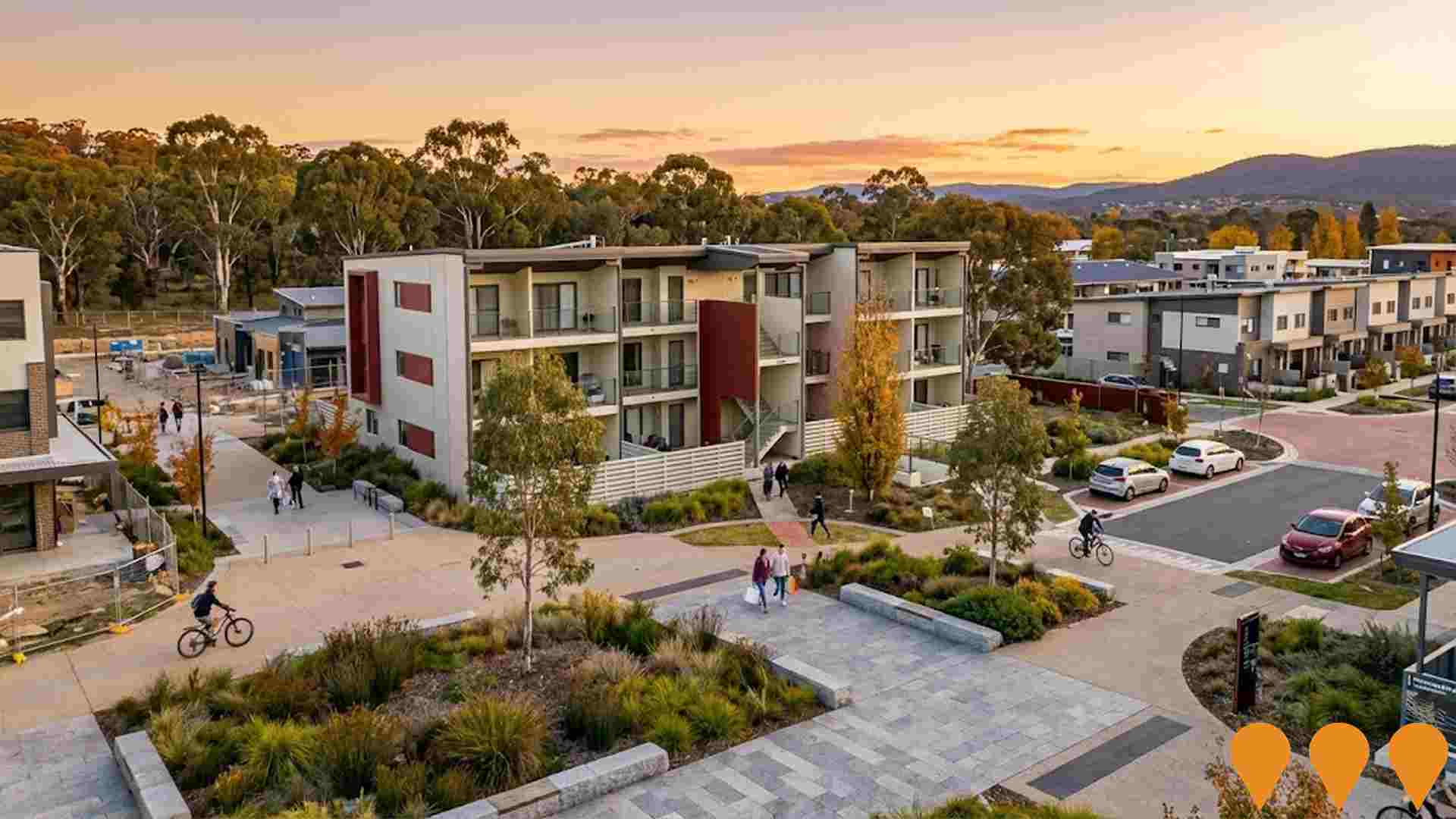
Belconnen Town Centre East Precinct (Republic Phase 2 & Future)
Major mixed-use redevelopment of the former Belconnen Bowling Club site and surrounding land in Belconnen Town Centre (approx. 5 km from Dunlop), delivering apartments, retail, and public spaces.
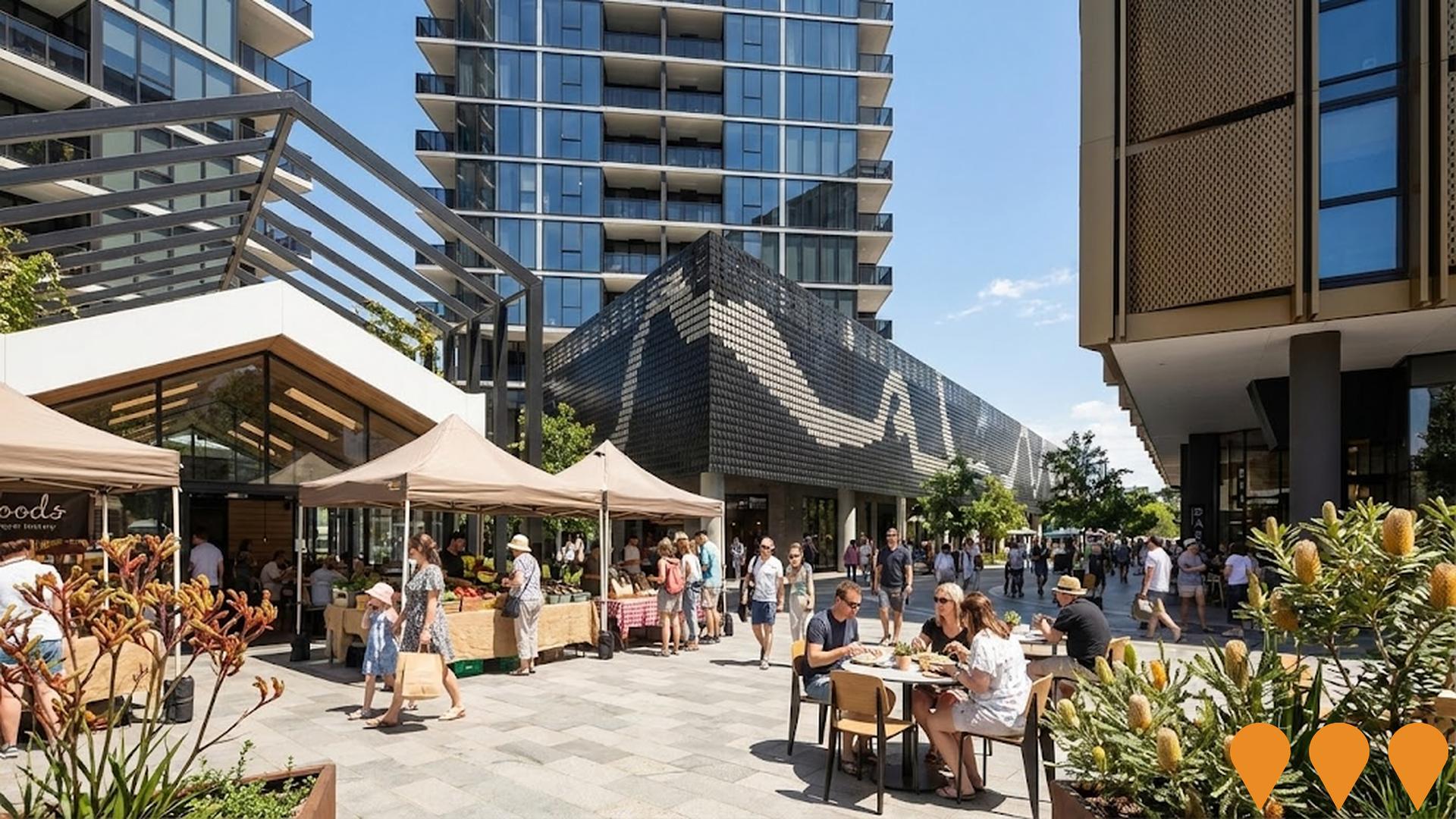
Enhanced bus and light rail corridors (Belconnen & Queanbeyan to Central Canberra)
ACT is progressing an integrated program to enhance high-frequency bus and future light rail corridors that link Belconnen and Queanbeyan with central Canberra. Light Rail Stage 2A (City to Commonwealth Park) commenced construction in early 2025 with services targeted from 2028, while planning and approvals continue for Stage 2B to Woden. The ACT Government has acknowledged and is planning upgrades for the Belconnen-to-City bus corridor as groundwork for a future east-west light rail Stage 3, and is coordinating cross-border public transport initiatives with NSW through the Queanbeyan Region Integrated Transport Plan and the ACT-NSW MoU for Regional Collaboration.
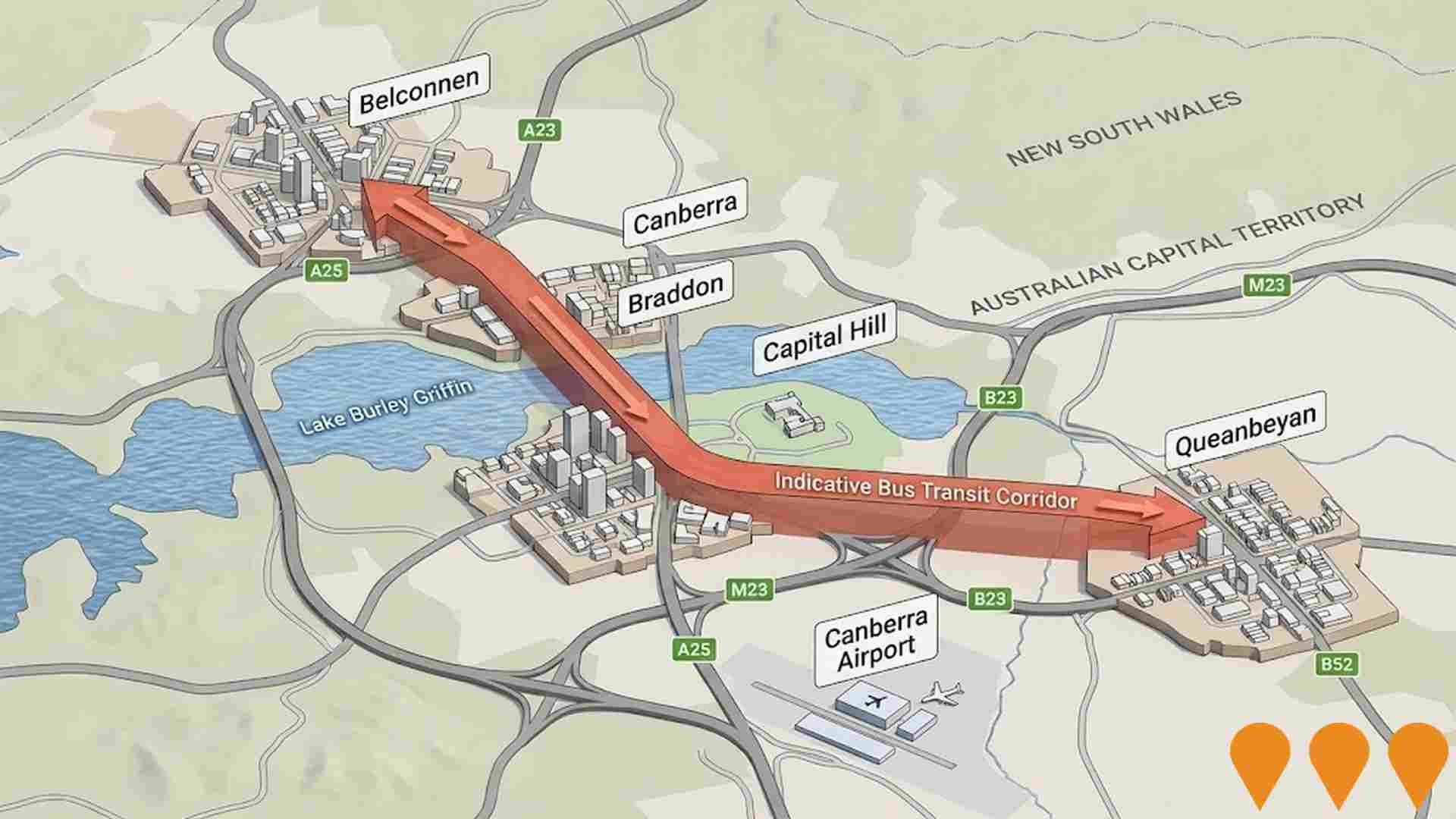
HumeLink
HumeLink is a new 500kV transmission line project connecting Wagga Wagga, Bannaby, and Maragle, spanning approximately 365 km. It includes new or upgraded infrastructure at four locations and aims to enhance the reliability and sustainability of the national electricity grid by increasing the integration of renewable energy sources such as wind and solar.
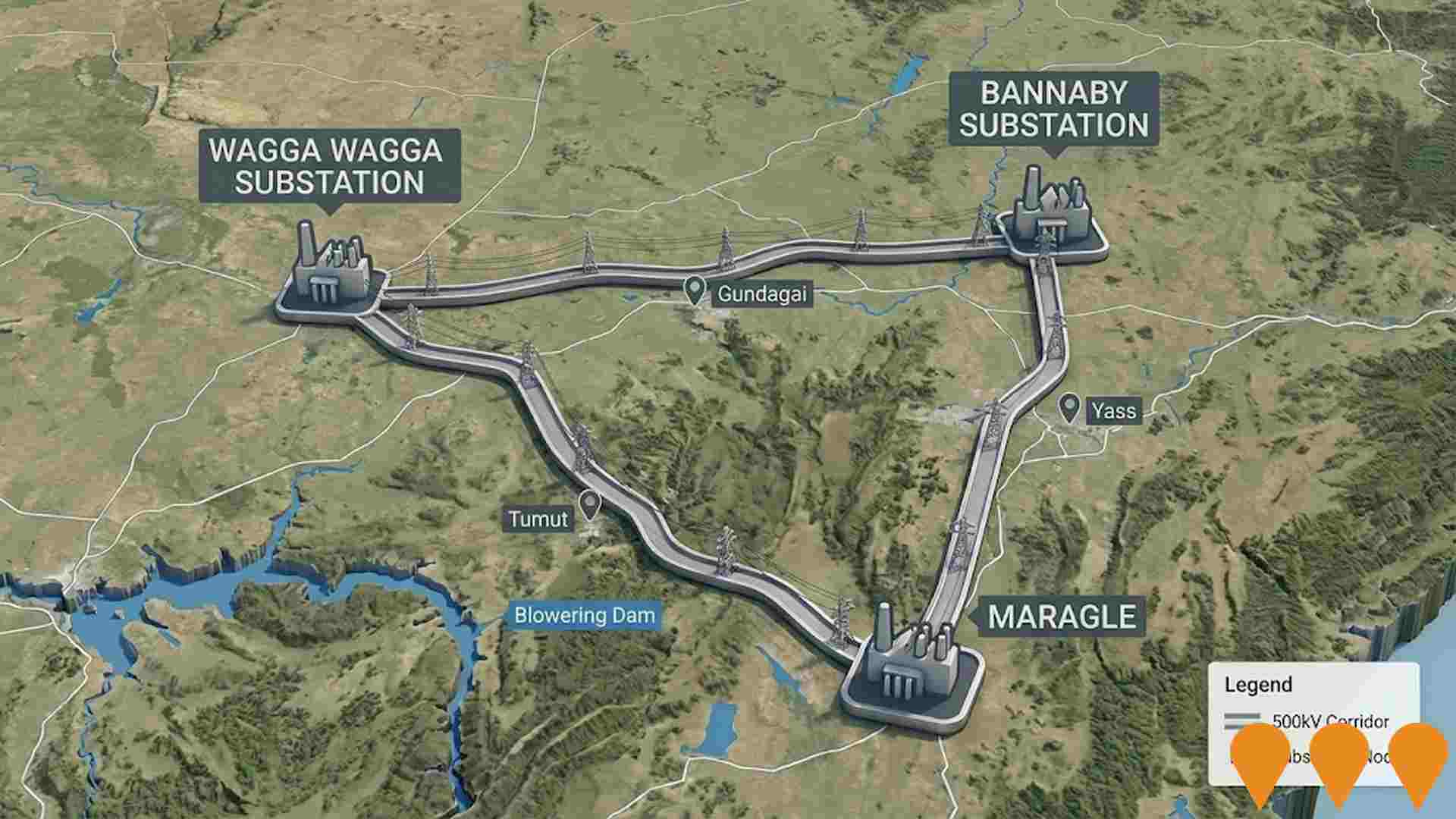
Queanbeyan Regional Integrated Transport Plan
Comprehensive transport planning initiative with 64 key actions for next 10 years. Addresses road safety, active transport connectivity, public transport availability, and future transport needs. Improved connections between Queanbeyan and ACT.
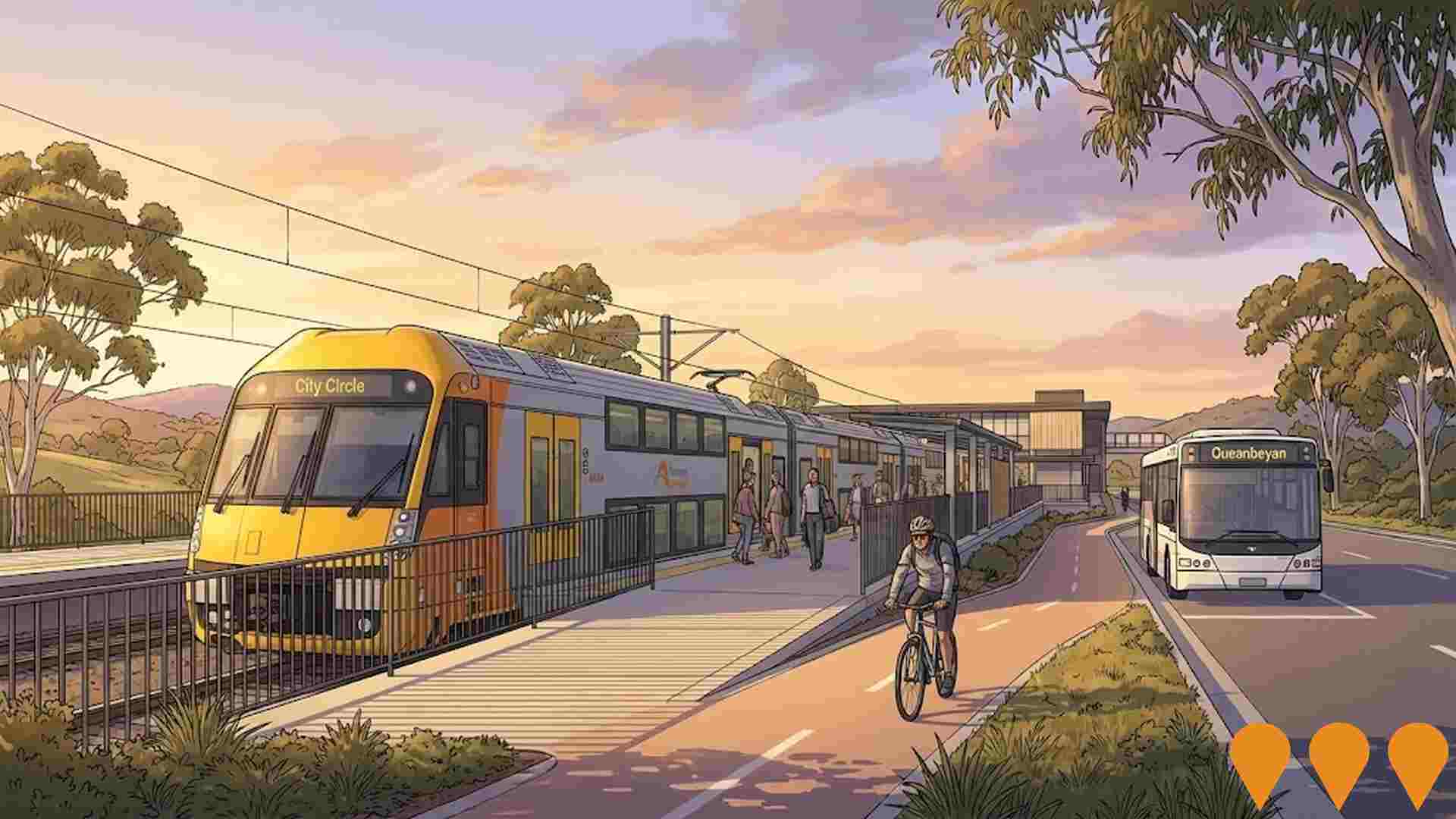
Employment
Employment conditions in Cook demonstrate strong performance, ranking among the top 35% of areas assessed nationally
Cook's workforce is highly educated with strong professional services representation. The unemployment rate was 2.6% in the past year, with an estimated growth of 2.4%.
As of June 2025, 1,617 residents were employed, with a 0.8% lower unemployment rate than the Australian Capital Territory's 3.4%. Workforce participation was 65.3%, below the ACT's 69.6%. Key employment sectors include public administration & safety, education & training, and professional & technical services. Education & training showed particularly strong specialization with an employment share of 1.6 times the regional level.
Conversely, accommodation & food had lower representation at 4.3% compared to the regional average of 6.5%. The area offers limited local employment opportunities as indicated by Census data. Between June 2024 and June 2025, employment levels increased by 2.4%, labour force by 1.7%, reducing unemployment by 0.7 percentage points. In comparison, the Australian Capital Territory saw employment grow by 1.9% and unemployment fall by 0.3 percentage points. Jobs and Skills Australia's national employment forecasts from May 2025 project a 6.6% increase over five years and 13.7% over ten years. Applying these projections to Cook's employment mix suggests local growth of approximately 6.6%% over five years and 13.5% over ten years, though this is a simplified extrapolation for illustrative purposes only.
Frequently Asked Questions - Employment
Income
The economic profile demonstrates exceptional strength, placing the area among the top 10% nationally based on comprehensive AreaSearch income analysis
Cook's median income among taxpayers was $71,967 in financial year 2022. The average income stood at $90,314 during the same period. These figures compare to those for Australian Capital Territory, which were $68,678 and $83,634 respectively. Based on Wage Price Index growth of 13.6% since financial year 2022, current estimates would be approximately $81,755 (median) and $102,597 (average) as of September 2025. According to the 2021 Census figures, household incomes in Cook rank between the 82nd and 94th percentiles nationally. Family incomes also fall within this range, with personal incomes ranking highly. The income distribution shows that 31.7% of residents (919 people) earn between $1,500 and $2,999 weekly. This is consistent with broader trends across the surrounding region, where 34.3% of residents fall into the same category. Notably, 37.1% of Cook's residents earn above $3,000 weekly. After housing costs, residents retain 87.6% of their income, indicating strong purchasing power. The area's SEIFA income ranking places it in the 9th decile.
Frequently Asked Questions - Income
Housing
Cook displays a diverse mix of dwelling types, with above-average rates of outright home ownership
The dwelling structure in Cook, as evaluated at the latest Census, consisted of 60.7% houses and 39.3% other dwellings (semi-detached, apartments, 'other' dwellings). In comparison, Australian Capital Territory had 69.4% houses and 30.5% other dwellings. Home ownership in Cook stood at 40.9%, with the remaining dwellings either mortgaged (35.0%) or rented (24.1%). The median monthly mortgage repayment was $2,167, higher than Australian Capital Territory's average of $2,000. Median weekly rent in Cook was recorded at $440, compared to Australian Capital Territory's $430. Nationally, Cook's mortgage repayments were significantly higher than the Australian average of $1,863, while rents were substantially above the national figure of $375.
Frequently Asked Questions - Housing
Household Composition
Cook features high concentrations of lone person households, with a lower-than-average median household size
Family households constitute 65.2% of all households, including 27.0% couples with children, 27.0% couples without children, and 9.8% single parent families. Non-family households account for the remaining 34.8%, with lone person households at 31.0% and group households making up 3.6%. The median household size is 2.3 people, which is smaller than the Australian Capital Territory average of 2.5.
Frequently Asked Questions - Households
Local Schools & Education
Cook performs slightly above the national average for education, showing competitive qualification levels and steady academic outcomes
Cook's residents aged 15+ exceed national averages in educational attainment. 60.8% hold university qualifications compared to Australia's 30.4%. Locally, the SA3 area has 43.8%. Bachelor degrees are most prevalent at 31.5%, followed by postgraduate qualifications (22.4%) and graduate diplomas (6.9%).
Vocational pathways account for 18.5% of qualifications, with advanced diplomas at 8.4% and certificates at 10.1%. Educational participation is high, with 28.7% currently enrolled in formal education. This includes 8.4% in primary, 7.7% in tertiary, and 7.5% in secondary education. Schools are primarily located outside Cook's immediate boundaries, necessitating access to neighboring areas for families.
Frequently Asked Questions - Education
Schools Detail
Nearby Services & Amenities
Transport
Transport servicing is moderate compared to other areas nationally based on assessment of service frequency, route connectivity and accessibility
Cook has 11 active public transport stops operating within its boundaries. These stops serve a mix of bus routes, with one route currently in operation. Together, these routes facilitate 196 weekly passenger trips.
The accessibility of transport is rated as good, with residents typically located 230 meters from the nearest stop. On average, services run 28 times per day across all routes, equating to approximately 17 weekly trips per individual stop.
Frequently Asked Questions - Transport
Transport Stops Detail
Health
Health performance in Cook is lower than average with common health conditions somewhat prevalent across both younger and older age cohorts
Cook faces significant health challenges with common health conditions prevalent across both younger and older age cohorts. The rate of private health cover is exceptionally high at approximately 67% of the total population (1,935 people), compared to 57.1% across Australian Capital Territory, which has a national average of 55.3%. The most common medical conditions in the area are mental health issues and asthma, impacting 10.6 and 9.3% of residents respectively.
Conversely, 64.0% of residents declare themselves completely clear of medical ailments, compared to 68.1% across Australian Capital Territory. The area has 20.3% of residents aged 65 and over (590 people), which is higher than the 15.3% in Australian Capital Territory. Health outcomes among seniors are above average, performing even better than the general population in health metrics.
Frequently Asked Questions - Health
Cultural Diversity
The level of cultural diversity witnessed in Cook was found to be above average when compared nationally for a number of language and cultural background related metrics
Cook was found to have above average cultural diversity, with 24.9% of its population born overseas and 15.7% speaking a language other than English at home. The main religion in Cook is Christianity, comprising 32.9% of the population. However, Buddhism is overrepresented, making up 2.4%, compared to 3.0% across Australian Capital Territory.
The top three represented ancestry groups are English (27.2%), Australian (23.4%), and Irish (10.5%). Notably, Welsh (0.9%) and Russian (0.7%) are overrepresented in Cook compared to regional averages of 0.6% and 0.3%, respectively. Hungarian is also slightly overrepresented at 0.5%.
Frequently Asked Questions - Diversity
Age
Cook hosts an older demographic, ranking in the top quartile nationwide
Cook has a median age of 42, which is higher than the Australian Capital Territory figure of 35 and significantly higher than Australia's median age of 38. Compared to the Australian Capital Territory average, the 75-84 cohort is notably over-represented in Cook, making up 7.5% of its population, while the 25-34 year-olds are under-represented at 10.2%. Between 2021 and the present day, the 15 to 24 age group has grown from 8.9% to 12.3%, while the 25 to 34 cohort has declined from 12.7% to 10.2%. Demographic modeling suggests that Cook's age profile will evolve significantly by 2041. The 85+ age group is projected to grow significantly, expanding by 46 people (52%) from 87 to 134. Notably, the combined 65+ age groups are expected to account for 80% of total population growth, reflecting the area's aging demographic profile. Meanwhile, the 75 to 84 and 45 to 54 cohorts are expected to experience population declines.
